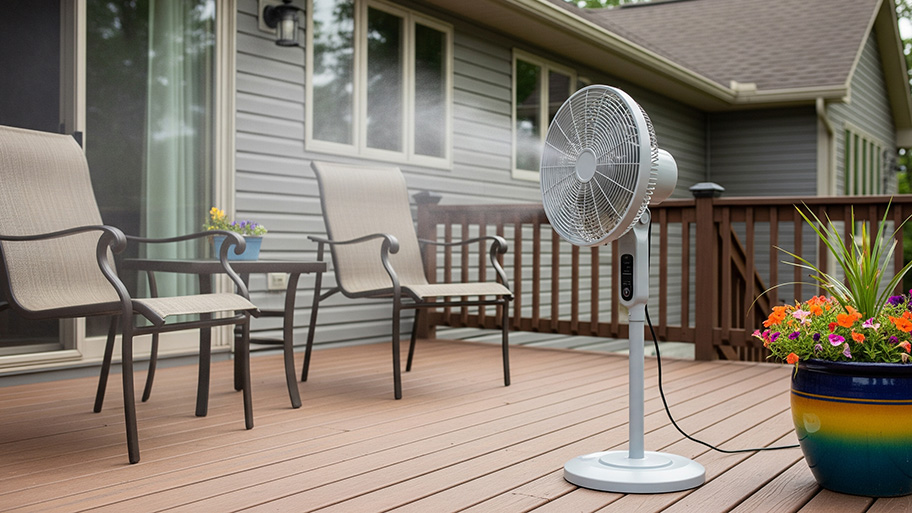
Get matched with top ceiling fan pros in Lilbourn, MO
Enter your zip and get matched with up to 5 pros
Need a pro for your ceiling fan service project in Lilbourn, MO?
Verified Reviews for Ceiling Fan Service pros in Lilbourn, MO
*The Angi rating for Ceiling Fan Service companies in Lilbourn, MO is a rating based on verified reviews from our community of homeowners who have used these pros to meet their Ceiling Fan Service needs.
*The HomeAdvisor rating for Ceiling Fan Service companies in Lilbourn, MO is a rating based on verified reviews from our community of homeowners who have used these pros to meet their Ceiling Fan Service needs.
Last update on December 08, 2025
Find Ceiling fan pros in Lilbourn
Heaven Scent Housekeeping
Heaven Scent Housekeeping
I offer affordable housekeeping in just one call. I do make sure my clients are happy with my work. Discounts available for weekly clients.
I offer affordable housekeeping in just one call. I do make sure my clients are happy with my work. Discounts available for weekly clients.
ALL-N-ALL CONSTRUCTION, LLC
ALL-N-ALL CONSTRUCTION, LLC
Construction, remodeling, repairs as many people as needed, cash, check, money order and can accept cards for fee
Construction, remodeling, repairs as many people as needed, cash, check, money order and can accept cards for fee
Taylor engineering and construction inc.
Taylor engineering and construction inc.
We are a family owned and managed business that does engineering and technology design and development for the.automotive industry and construction industry if you can dream it we can build it we take pride in our quality workmanship and attention to detail.
We are a family owned and managed business that does engineering and technology design and development for the.automotive industry and construction industry if you can dream it we can build it we take pride in our quality workmanship and attention to detail.
Call The All In One Construction Co
Call The All In One Construction Co
I have 35 years experience in construction I have performed all phases of construction im a 4th generation contractor I have 4 employees
I have 35 years experience in construction I have performed all phases of construction im a 4th generation contractor I have 4 employees
Nunezotw
Nunezotw
From the grown up my crew and I will make your visions come rue
From the grown up my crew and I will make your visions come rue

Assured Building Products LLC.
Assured Building Products LLC.
Our company provides great customer service with quality products at a competitive price.
Our company provides great customer service with quality products at a competitive price.

HighTech Service
HighTech Service
Licensed and Insured. Expert Service. Military and Senior Discounts. Clean and Professional. Emergency Service Available. Quality Assurance Program. Small Business. Local Family Owned.
Licensed and Insured. Expert Service. Military and Senior Discounts. Clean and Professional. Emergency Service Available. Quality Assurance Program. Small Business. Local Family Owned.
The Lilbourn, MO homeowners’ guide to ceiling fan services
From average costs to expert advice, get all the answers you need to get your job done.

If your ceiling fan stops working due to a bad motor or broken pull chain, here’s what you can expect to pay to get it fixed.
 •
•Discover the cost to install a ceiling fan, including labor, materials, and tips to save. Learn what impacts your price and how to budget for your project.

Learn how to wire a ceiling fan with a light directly from a power source or wall switch and add a convenient remote control. Follow this step-by-step guide.

It's time to cool off! Learn 10 ways to make your room cool without an air conditioner in this informational fan hack guide.

With the right size, ceiling fans are an energy-efficient way to cool a room. Use this ceiling fan size guide to find the perfect model for your space.

Most ceiling fans should be reasonably quiet most of the time. Learn why your ceiling fan is making noise and how you can fix these common problems
- New Madrid, MO Ceiling fan pros
- Portageville, MO Ceiling fan pros
- Tiptonville, TN Ceiling fan pros
- Morehouse, MO Ceiling fan pros
- East Prairie, MO Ceiling fan pros
- Gideon, MO Ceiling fan pros
- Malden, MO Ceiling fan pros
- Bernie, MO Ceiling fan pros
- Sikeston, MO Ceiling fan pros
- Miner, MO Ceiling fan pros
- Clarkton, MO Ceiling fan pros
- Ridgely, TN Ceiling fan pros
- Dexter, MO Ceiling fan pros
- Hickman, KY Ceiling fan pros
- Hornbeak, TN Ceiling fan pros
- Hayti, MO Ceiling fan pros
- Campbell, MO Ceiling fan pros
- Holcomb, MO Ceiling fan pros
- Bloomfield, MO Ceiling fan pros
- Caruthersville, MO Ceiling fan pros
- Charleston, MO Ceiling fan pros
- Troy, TN Ceiling fan pros
- Obion, TN Ceiling fan pros
- Union City, TN Ceiling fan pros
- Benton, MO Ceiling fan pros
- Kennett, MO Ceiling fan pros
- Oran, MO Ceiling fan pros
- Clinton, KY Ceiling fan pros
- Piggott, AR Ceiling fan pros
- Trimble, TN Ceiling fan pros



